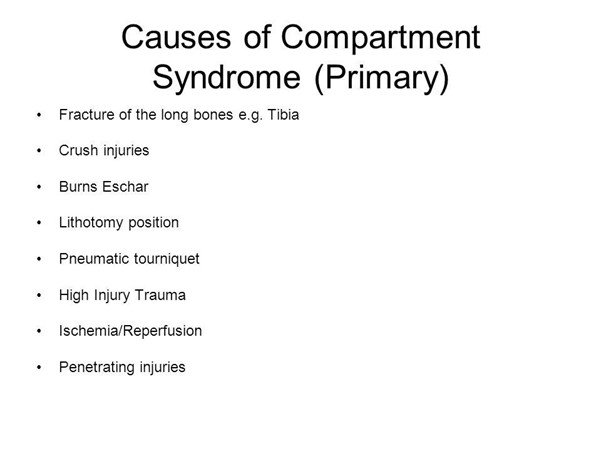A nurse notes increasing edema in the calf of a client who has multiple fractures of the leg. The nurse should recognize that increasing edema is a manifestation of which of the following complications?
Malignant hypothermia
Pulmonary embolism
Acute compartment syndrome
Fat embolism syndrome
The Correct Answer is C
A. Malignant hypothermia: This is a rare but life-threatening reaction to certain medications used during anesthesia. It doesn't typically manifest with calf edema.
B. Pulmonary embolism: While pulmonary embolism can occur as a complication in some cases, it is characterized by symptoms like sudden shortness of breath, chest pain, and may not directly cause calf edema.
C. Acute compartment syndrome
Increasing edema in the calf of a client with multiple fractures of the leg is a manifestation of acute compartment syndrome. Acute compartment syndrome occurs when there is increased pressure within a muscle compartment, which can lead to reduced blood flow, nerve damage, and tissue hypoxia. The edema and increased pressure can compress blood vessels, nerves, and muscle tissue within the compartment, resulting in symptoms such as severe pain, edema, and potential vascular compromise.
D. Fat embolism syndrome: This syndrome can occur in clients with long bone fractures, but it is characterized by respiratory and neurologic symptoms, not isolated calf edema.

Nursing Test Bank
Naxlex Comprehensive Predictor Exams
Related Questions
Correct Answer is A
Explanation
A. Apply a moisture barrier ointment to the client's skin
Applying a moisture barrier ointment creates a protective barrier on the skin, preventing prolonged exposure to moisture, which can lead to skin breakdown in individuals with urinary incontinence. Keeping the skin dry and protected is essential in preventing skin irritation and breakdown.
B. Check the client's skin every 8 hr for signs of breakdown - Skin should be assessed more frequently, ideally every 2-4 hours, especially in clients with urinary incontinence, to detect signs of breakdown early.
C. Clean the client's skin and perineum with hot water after each episode of incontinence - Hot water can be harsh on the skin and exacerbate irritation. It's recommended to use mild, warm water and gentle cleansing techniques. Harsh cleaning methods can damage the skin.
D. Request a prescription for the insertion of an indwelling urinary catheter - Indwelling urinary catheters pose an increased risk of infection and other complications. Catheters should only be used when absolutely necessary, and preventive measures should be taken to manage incontinence without catheterization whenever possible.
Correct Answer is D
Explanation
A. Void every 6 to 8 hours:This interval may not be frequent enough. It is generally recommended to void every 2 to 3 hours to help flush out bacteria and reduce the risk of infection.
B. Avoid voiding immediately after sexual intercourse.This is not recommended. It is actually advised to void immediately after sexual intercourse to help flush out any bacteria that may have entered the urethra.
C. Take a bubble bath daily and keep the perineal region clean:
While keeping the perineal region clean is important for general hygiene, taking bubble baths and using heavily scented products can irritate the urethra and potentially increase the risk of UTIs. The nurse should advise against frequent bubble baths and suggest using mild, unscented soaps for the perineal area.
D. Increase the daily amount of water consumed:
Drinking more water helps increase urine output, which helps flush out bacteria from the urinary tract and can reduce the risk of recurrent UTIs.
Whether you are a student looking to ace your exams or a practicing nurse seeking to enhance your expertise , our nursing education contents will empower you with the confidence and competence to make a difference in the lives of patients and become a respected leader in the healthcare field.
Visit Naxlex, invest in your future and unlock endless possibilities with our unparalleled nursing education contents today
Report Wrong Answer on the Current Question
Do you disagree with the answer? If yes, what is your expected answer? Explain.
Kindly be descriptive with the issue you are facing.
